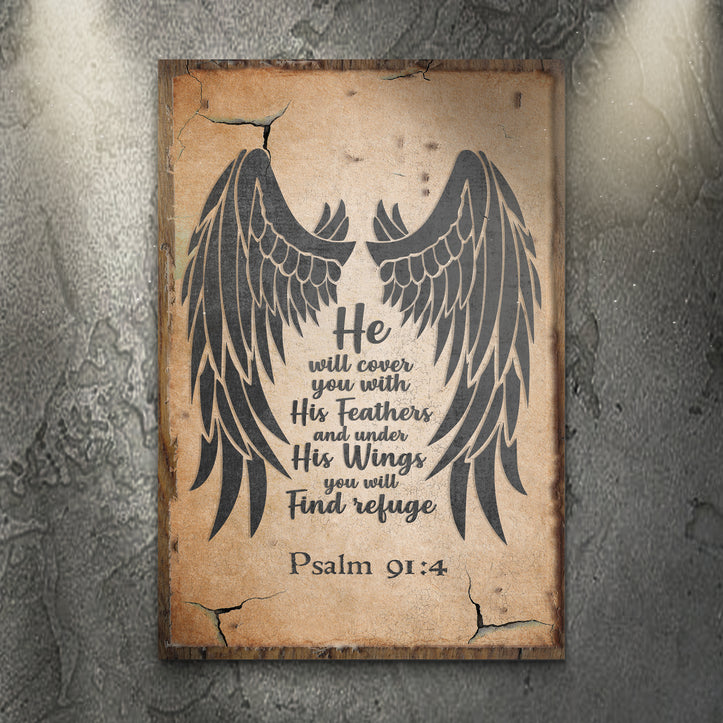Christian signs have been an integral part of religious symbolism for centuries, embodying deep meaning and spiritual significance. However, in the world of art, these symbols have taken on new and innovative interpretations that challenge traditional understandings.
Artists today are exploring and reimagining Christian themes and signs in exciting and thought-provoking ways. They strive to bridge the gap between ancient traditions and the modern world, inviting viewers to engage with age-old symbols in fresh and meaningful ways.
Key Takeaways:
- Christian signs have evolved and are being reimagined in contemporary art.
- Artists like Chris Ofili challenge traditional interpretations and spark debate.
- Contemporary interpretations invite viewers to engage with Christian symbols in new and thought-provoking ways.
- Christian symbols continue to inspire artists and believers alike.
- The power of art lies in its ability to push boundaries and inspire reflection.
The Symbolism of Christian Signs
Christian symbolism is an integral part of the religious tradition, using symbols, acts, artwork, and events to express Christian ideas. These symbols invest objects or actions with an inner meaning that reflects Christian beliefs. While some Christian denominations practice Aniconism, avoiding the use of images, many others embrace symbolism to convey important theological concepts.
Throughout history, Christian symbols have been borrowed from diverse cultures and regions, adapting to new contexts and interpretations. The richness of Christian symbolism continues to inspire artists and believers alike.
Christian symbols hold deep meaning and represent significant aspects of the faith. They embody timeless truths and serve as visual reminders of spiritual concepts. For example, the cross is universally recognized as a symbol of Christ's sacrifice and redemption. The image of an empty tomb resonates with the Christian belief in the resurrection. The dove is often used to represent the Holy Spirit, while the fish (Ichthys) symbolizes Jesus and faith.
"The symbols of Christianity are not just decorative or ceremonial; they carry profound spiritual significance. They allow believers to connect with the teachings and stories of the Bible on a deeper level, and they serve as powerful reminders of God's presence and love."
From early Christian art to contemporary interpretations, symbols in Christianity have played a crucial role in communicating the inner mysteries of the faith. They transcend language barriers and cultural differences, speaking to the universal human experience of seeking spiritual meaning and connection.
The Rich Symbolism of Christian Signs
Christian symbolism encompasses a wide range of signs, each carrying its own unique meaning. Here are some examples:
- The cross and crucifix: Represents the crucifixion and sacrifice of Jesus, symbolizing redemption and divine love.
- The Ichthys (fish): An early Christian symbol that signifies belief in Jesus as the Son of God and Savior.
- The alpha and omega: The first and last letters of the Greek alphabet, representing the eternal nature of God.
- The dove: Symbolizes the Holy Spirit and is often associated with peace, purity, and the presence of God.
- The lamb: Represents Jesus as the sacrificial lamb of God, emphasizing his humility and willingness to give his life for others.
- The anchor: A symbol of hope and stability, rooted in the Christian belief in the steadfastness of God's promises.
- The palm branch: Signifies triumph and victory, often associated with Jesus' entry into Jerusalem.
These symbols, and many more, contribute to the rich tapestry of Christian imagery and hold deep significance for believers. They provide visual cues that aid in worship, meditation, and contemplation.
Examples of Modern Christian Art
One artist who has attracted attention for his modern interpretations of Christian themes is Chris Ofili. His painting "The Holy Virgin Mary" caused controversy when it was exhibited in the Sensation exhibition in New York. Ofili incorporated cut-outs from pornographic magazines and elephant dung into the artwork, challenging traditional notions of sacredness and beauty.
Another notable work by Ofili is "The Upper Room," an installation featuring thirteen canvases depicting monkeys holding chalices. These artworks push the boundaries of traditional Christian imagery and provoke discussions about faith, race, and taboo subjects.
The Complexities of Christian Symbolism
The Christian tradition encompasses a rich tapestry of symbols that hold deep meaning for believers. These symbols, such as the cross and crucifix, the Ichthys (fish), and the alpha and omega, are imbued with centuries of theological significance.
The cross, a powerful symbol of redemption and divine love, represents the crucifixion of Jesus Christ. It serves as a reminder of the sacrifice made for humanity's salvation and the hope that springs forth from it.
The Ichthys, popularized by early Christians, is an acronym that translates to "Jesus Christ, Son of God, Savior." This symbol not only signifies belief in Jesus as the central figure of Christianity but also encapsulates the transformative power of faith and salvation.
The alpha and omega, symbolizing the eternal nature of God, derive from the first and last letters of the Greek alphabet. These letters serve as a powerful reminder of God's infinite presence and encompassment of all time and creation.
Throughout history, these symbols have served as core theological concepts that connect believers to their faith and serve as visual representations of Christian identity. They are a source of comfort, strength, and inspiration for individuals and communities alike.
"The cross, the Ichthys, and the alpha and omega are timeless symbols that unite Christians around the world, reminding us of our shared beliefs and providing a foundation for our faith." - Reverend Sarah Thompson
As Christian symbols, the cross and crucifix, the Ichthys, and the alpha and omega continue to hold diverse and layered meanings in the modern era. They invite exploration, contemplation, and deep reflection on the complex mysteries of the Christian faith.
Exploring Contemporary Interpretations
Contemporary artists are constantly pushing the boundaries of interpretation when it comes to Christian art. By reimagining and reinterpreting traditional Christian symbols, they bring new perspectives and cultural significance to these age-old icons.
These contemporary interpretations go beyond the surface level, challenging preconceived notions and provoking critical thinking about the meaning of faith, spirituality, and societal issues. Through their artistic expressions, these artists delve into themes such as social justice, gender and sexuality, race, and environmentalism, exploring the cultural relevance and implications of Christian symbols.
One artist who exemplifies this exploration is Chris Ofili. His controversial painting "The Holy Virgin Mary" incorporates unconventional materials such as cut-outs from pornographic magazines and elephant dung. By juxtaposing these elements with Christian iconography, Ofili challenges traditional notions of sacredness and beauty, inviting viewers to question and reflect upon the cultural context and complexities of faith.
Another example of contemporary interpretation is the work of Kara Walker, who uses silhouettes to explore the intersection of race, power, and religion. In her piece "A Subtlety," she presents a giant sphinx-like sculpture made entirely of sugar, challenging traditional notions of sweetness, purity, and personal identity. Walker's interpretation invites viewers to confront the dark legacy of slavery and its impact on the African American experience.
"Contemporary interpretations of Christian art offer a fresh perspective on the cultural and societal issues that we face today. By incorporating contemporary themes and challenging traditional symbols, artists create a dialogue that sparks reflection and fosters a deeper understanding of faith."
By exploring contemporary interpretations of Christian art, viewers are urged to engage with these symbols in a new and relevant way. This fosters dialogue and reflection on topics that are important to our society today, bridging the gap between ancient traditions and the complexities of the modern world.
|
Artist |
Artwork |
Themes Explored |
|
Chris Ofili |
The Holy Virgin Mary |
Cultural context, challenging traditions |
|
Kara Walker |
A Subtlety |
Race, power, personal identity |
The Role of Christian Symbols in the Modern Spiritual Landscape
In a rapidly changing world, the meanings of Christian signs have also evolved. Traditional interpretations are often juxtaposed with contemporary beliefs and values, reflecting the diversity of spiritual perspectives. Christian symbols continue to play a significant role in the modern spiritual landscape, both in religious contexts and in secular society. They serve as reminders of shared heritage, sources of inspiration, and catalysts for contemplation and introspection. The evolving meanings of Christian signs reflect the ongoing dialogue between tradition and innovation, faith and doubt, and individual interpretation.
Contemporary spirituality embraces a wide range of beliefs and practices, incorporating various influences from different cultures and traditions. In this context, Christian symbols hold a unique place, carrying with them the weight of history and the power to evoke profound emotions and connections. They serve as a bridge between the ancient and the modern, the traditional and the progressive, allowing individuals to engage with their faith in ways that resonate with their personal experiences and beliefs.
"Christian symbols have a timeless appeal that transcends religious boundaries. They possess a universal language that speaks to the innermost desires and aspirations of the human spirit."
Christian symbols have the ability to transcend religious boundaries, resonating with individuals who may not identify as Christians but still find meaning in these ancient signs. Whether it's the cross, the dove, or the fish, these symbols tap into the collective unconscious and evoke universal themes of love, forgiveness, hope, and salvation.
Table: Examples of Christian Symbols in the Modern Context
|
Symbol |
Meaning |
|
Represents the eternal journey of the soul and the interconnectedness of all living beings |
|
|
🕊️ |
Symbolizes peace, divine presence, and the Holy Spirit |
|
🌿 |
Signifies growth, renewal, and the abundance of life |
|
✝️ |
Represents the crucifixion of Jesus and the ultimate sacrifice for the redemption of humanity |
These examples demonstrate the enduring relevance of Christian symbols in contemporary spirituality. They continue to inspire individuals on their spiritual journey, offering a sense of grounding, comfort, and guidance.
The Evolving Meanings of Christian Signs
The evolving meanings of Christian signs reflect the ever-changing nature of the human experience and our evolving understanding of spiritual concepts. As society progresses and new ideas and perspectives emerge, the interpretation of Christian symbols adapts to encompass these shifts. This dynamic process ensures that these timeless symbols remain relevant and resonant in the modern era.
Christian symbols serve as a bridge between tradition and innovation, faith and doubt, providing individuals with a source of strength and guidance in their spiritual lives.
As individuals engage with Christian symbols in their personal and communal practices, they bring their unique perspectives and experiences, infusing these symbols with new layers of meaning. This ongoing dialogue between tradition and innovation enriches the spiritual landscape and fosters a deeper understanding and appreciation for the diverse ways in which people connect with the divine.
The Power of Art to Challenge and Inspire
Artistic expression has the remarkable ability to transcend traditional boundaries and ignite inspiration within viewers. When it comes to exploring Christian themes, contemporary interpretations in art have the power to challenge preconceived notions, provoke thought, and initiate meaningful conversations. By pushing the boundaries of traditional interpretations, art invites viewers to engage with Christian symbols in a deeply personal and introspective way. This process encourages contemplation, reflection, and an exploration of the deeper meanings behind age-old symbols.
"Art is not freedom from discipline, but disciplined freedom." - John F. Kennedy
Through the artistic lens, Christian signs become vehicles that raise essential questions about the role of religion in society and the boundaries of artistic expression. Symbols, such as the cross or alpha and omega, convey complex ideas beyond their literal interpretations. This challenge to the status quo allows for a more profound understanding of faith, spirituality, and societal issues in contemporary contexts.
The contemplative nature of art provides an opportunity for individuals to delve into their own interpretations of Christian symbolism. By engaging with these symbols, viewers are encouraged to reflect on their own beliefs, values, and personal connections to spirituality. This introspective journey fosters a deeper appreciation for the timeless wisdom and spiritual insights embedded within Christian signs.
Art has the remarkable capability to spark dialogue and challenge interpretations, pushing the boundaries of what is considered the norm. It opens doors to new perspectives, encourages empathy, and invites individuals to explore their own spirituality. Through interpretation, contemplation, and reflection, art inspires us to delve deeper into the immense power and significance of Christian symbols in our lives.
Conclusion
The evolution of Christian symbols in modern and contemporary art highlights the ever-changing nature of religious symbolism in our dynamic world. These reinterpretations challenge traditional understandings of Christian signs, prompting deeper thought and initiating meaningful discussions about faith, spirituality, and societal issues. Through the power of art, viewers are inspired and challenged to explore the complexities and profound meanings embedded within Christian symbols.
Art has the ability to inspire and provoke viewers, inviting them to contemplate the deeper significance of Christian themes. These contemporary interpretations of Christian signs ignite dialogue and encourage reflection on the evolving spiritual landscape. As society continues to evolve, so too do the interpretations of Christian symbols, shaping the ongoing conversation around faith, belief, and the role of religion in the modern world.
The impact of contemporary interpretations of Christian signs resonates in both religious and secular contexts. These interpretations invite individuals to engage with religious symbols in a more personal and introspective manner, considering their relevance in relation to their own beliefs and values. The evolving meanings of Christian symbols reflect the ongoing dialogue between tradition and innovation, providing a rich tapestry for exploration and understanding.
FAQ
What are some examples of modern and contemporary interpretations of Christian themes and signs?
One notable example is the painting "The Holy Virgin Mary" by artist Chris Ofili, which incorporates cut-outs from pornographic magazines and elephant dung. Another example is Ofili's installation "The Upper Room," featuring thirteen canvases depicting monkeys holding chalices.
What is the symbolism behind Christian signs?
Christian signs carry deep meaning and reflect important theological concepts. Examples include the cross and crucifix, symbolizing the crucifixion and redemption of Jesus, the Ichthys (fish), representing belief in Jesus as the Son of God and Savior, and the alpha and omega, symbolizing the eternal nature of God.
How do contemporary artists interpret Christian signs?
Contemporary artists reimagine and reinterpret traditional Christian symbols to reflect the complexities of the modern world. They explore themes such as social justice, gender and sexuality, race, and environmentalism, inviting viewers to engage with Christian symbols in a new and relevant way.
What is the role of Christian symbols in the modern spiritual landscape?
Christian symbols continue to play a significant role in both religious contexts and secular society. They serve as reminders of shared heritage, inspire individuals, and foster contemplation and introspection. The evolving meanings of these symbols reflect the ongoing dialogue between tradition and innovation.
How does art challenge and inspire viewers in relation to Christian themes?
Art has the power to transcend traditional boundaries and spark meaningful conversations. Contemporary interpretations of Christian signs in art raise important questions about the role of religion in society, artistic expression, and the power of symbols to convey complex ideas. It encourages contemplation, reflection, and an exploration of the deeper meanings behind age-old symbols.
How have the meanings of Christian signs evolved over time?
The meanings of Christian signs have evolved in response to the changing spiritual landscape. Traditional interpretations are often juxtaposed with contemporary beliefs and values, reflecting the diversity of spiritual perspectives. As the world continues to change, the interpretations of Christian signs will also continue to evolve, shaping the conversation around faith and belief.






